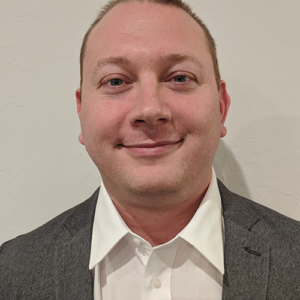You might not normally think of professional athletes meditating and engaging in mindfulness.
And yet superstar athletes like Kobe Bryant and Michael Jordan have used these principles to help improve their performance, with impressive results.
George Mumford, author of The Mindful Athlete: Secrets of Pure Performance, coaches athletes and executives on how to use mindfulness to level up their game. He counts Kobe Bryant, Shaquille O’Neal and Jordan as among the top athletes he’s worked with. He also offers courses online for those interested in exploring these concepts and applying them to their daily lives. His newest course addresses dealing with anxiety as the world reopens from the pandemic.
Mumford comes to mindfulness through his own journey of breaking free of addiction. He was sensitive as a child, easily picking up on other people’s pain, but he was discouraged from expressing his empathy with others. He was told to just “man up” and put aside his feelings. As an athlete in college, Mumford suffered injuries and digestive issues. He became addicted to painkillers. In his recovery from addiction, Mumford started learning about mindfulness, meditation, and the mind-body connection. He’s now been clean and sober for 20 years and teaches all he’s learned, and continues to learn, with others.
Slowing Down
One lesson Mumford had to learn was to slow down. “For decades I was trying too hard,” Mumford says. “I realized slow motion will get you there quicker.” Learning to become self-aware, to live in the moment, and to pause and take stock have all been integral to Mumford’s growth. Mumford sees meditation and mindfulness as tools that help us stop and be still, no matter what might be going on around us. His business is called “Eye of the Hurricane” because it evokes that still, quiet place in the center. He references a lesson from meditation teacher Thich Nhat Hanh, where he describes a pebble being thrown into the water. The pebble falls to rest at the bottom and like that pebble, we “have the ability to stop, be still, and know.” Through going calm and still, we become self-aware, and we cultivate wisdom.
What Is Mindfulness?
Essentially, mindfulness is awareness. Mumford encourages to ask, “Are you aware of what you’re thinking?” Many people think that in order to meditate, you have to keep your mind on a single point of focus. While that’s a worthy goal, Mumford instead encourages us to observe the mind uncritically and be a silent witness. This is creating space through the pause. By slowing down, and becoming observant, rather than jumping to reaction, we can then start to welcome new perspectives and ways of seeing.
Learning to pause can be critical in tempering how we respond to any given situation. “We only have a short period of time where we’re just seeing the raw data before there’s an influx of thoughts and responses,” Mumford says. We just need to “let the present moment speak to you in your own language. . . . We jump to conclusions before we have more data.”
Meditation and mindfulness help to clear out the clutter in our brains. It helps us to “get beyond the illusion of separateness. . . . When you get rid of noise and clutter, nothing’s there. But because nothing’s there, there could be anything there,” says Mumford. A Buddhist symbol represents the idea that “I am nothing, I am everything.” This non-dualistic thinking also appears in other fields of thought. A Native American saying, brought to us through Joseph Campbell, is: “The center is everywhere and the circumference is nowhere.”
Mumford explains that the practices of meditation and mindfulness help us bring to “this place inside of us that’s quiet and still.” It’s like you’re “in the ocean and drop down below the surface where it’s quiet and peaceful; even if there’s wind it can’t touch the bottom.”
Core Values and Mindfulness
Years ago, meditative practice was often referred to as “Zen.” While the words have changed, and more and more people have adopted mindful practices, making it trendy, mindfulness isn’t a cure-all, and we need to be careful when we apply it to different contexts, says Mumford. He teaches that mindfulness must be guided by compassion, kindness, wisdom and integrity. “Mindfulness by itself is not enough,” he explains. It must be tempered by wisdom. Wisdom is “seeing things rightly”: one needs to act with integrity, to have “right speech, right action, and right livelihood.” It’s also important to be guided by core values. For Mumford, these are love, truth, curiosity, wisdom and service. Articulating your core values can also help with breaking patterns when combined with mindfulness.
Breaking Patterns Through Mindfulness
Habit patterns “have a way of showing when they’re not wanted.” Mindfulness can help us start to change how we interact with and respond to the world. Mumford explains that it’s good to have techniques that will help ease feelings of anger or frustration as they arise – such as pausing and tuning into your breath – but that at some point, you’ll want to turn toward those feelings and inquire into them. Start to ask what’s going on when the feelings arise, so you may better understand and perhaps shift your perspective. Even if you don’t have all the answers, that’s okay, Mumford says. What’s important is that you don’t judge it. Simply become aware and curious.
Mumford’s book, The Mindful Athlete, provides insight into not only how to be a better athlete, but also teaches lessons in living. “The reality is to be a mindful athlete you have to be a mindful person,” Mumford says. “It’s a way of life, no matter what you’re doing.” One principle Mumford teaches is that hyperfocus on the goal is counter-productive. If you’re focusing on the end result – like scoring a point in a game – you’re not “managing the moment.” He further explains: “If you’re too focused on how you’re doing, you’re not focused on what you’re doing.” Kobe Bryant credited these teachings for his success.
“Flow is the way to go,” Mumford says. If you’re trying to figure something out, often the best strategy is to leave it alone and think about something else for a while, as many stories of creative breakthroughs attest.
That doesn’t mean, however, that you should shy away from what’s uncomfortable. Getting uncomfortable will challenge you and push you to new perceptions. It provides the momentum toward change.
Philosopher and psychoanalyst Erich Fromm wrote that the efforts to change habits can cause anxieties. “The goal is to move through that anxiety in order to be stronger,” Mumford explains. He uses the analogy of a chrysalis to explain this concept. If someone were to break open a chrysalis, the cycle of growth would be interrupted and the caterpillar would not turn into a butterfly. The butterfly needs to struggle in order to eventually emerge into the fullest expression of what it is. Similarly, for people, “it’s the breaking out that allows us to have the strength to fly and allow us to be who we’re supposed to be.” Mumford advises making a commitment to a process instead of the outcome, and trust in it.
Ultimately, what’s important is being true to yourself and having faith. “When I’ve been true to myself, doors have opened up,” says Mumford.
You can learn more about George Mumford, his work
and his book at his website, www.georgemumford.com
The conversation with George Mumford continues on the Leading With Genuine Care podcast, where we talk more about concepts of mindfulness and meditation and the role of failure in helping us succeed. Connect with me on Twitter and LinkedIn and keep up with my company imageOne. Check out my website or some of my other work here.




